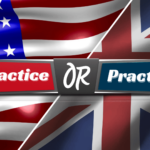Primary interjections, specifically, are those exclamations that help us convey strong emotions or quick reactions. This blog aims to break down primary interjections, covering their definition, how to use them, some rules, and providing examples to make them more relatable.
What is Primary Interjection?
Primary interjections, also called exclamatory interjections, are standalone words or phrases expressing strong emotions or quick reactions. They punctuate sentences with an exclamation mark, adding emphasis. Examples include “Yay!” for joy, “Oh!” for surprise, and “Ugh!” for frustration.
How to Use of Primary Interjections?
Primary interjections find their place in various contexts, adding emotional emphasis to a statement. They can express joy, surprise, frustration, or excitement. Let’s look at some common situations where primary interjections might be used:
Joyful Expressions:
- Yay! We won the game.
- Nice! You aced the exam.
Surprise and Astonishment:
- Oh, that’s an incredible sight.
- Oh my, I can’t believe you’re here.
Frustration and Disappointment:
- Ugh, I forgot my keys again.
- Oh no, I missed the last train.
Excitement:
- Yahoo! The concert is tonight.
- Yippee! It’s a snow day.
What are The Rules for Using Primary Interjections?
Using primary interjections effectively involves following a few rules:
Placement:
Primary interjections usually go at the beginning or end of a sentence.
- Awesome! You finished the project on time.
- You finished the project on time. Awesome!
Punctuation:
Always use an exclamation mark after primary interjections.
- Bravo! That was a stunning performance.
- Oh dear! I can’t believe I forgot.
Avoid Overuse:
Use interjections wisely to maintain their impact.
Examples of Primary Interjections in Sentences:
| Emotion | Interjection | Example Sentence |
|---|---|---|
| Joy | Yay! | Yay! We reached our fundraising goal. |
| Surprise | Oh, | Oh, you’ve redecorated the entire room. |
| Frustration | Ugh, | Ugh, I locked myself out of the car again. |
| Excitement | Yippee! | Yippee! We’re going on a vacation. |
Paired Conjunctions with Primary Interjections:
Pairing primary interjections with conjunctions can add emphasis. Here are some common pairings:
Well: Well, that’s a pleasant surprise!
But: Oh no, I forgot my wallet, but luckily I have some cash.
And: Hooray, and the best part is yet to come!
Primary Interjection VS. Secondary Interjection
While primary interjections stand alone and carry the weight of strong emotions, secondary interjections, on the other hand, are often integrated into the structure of a sentence. Secondary interjections, also known as transitional or parenthetical expressions, are less spontaneous and typically serve to provide additional information, convey attitude, or create a conversational tone.
Examples of Secondary Interjections:
- Of course, I’ll be there on time.
- In fact, we’ve already completed half of the project.
- On the other hand, I can see your point.
Conclusion:
Primary interjections spice up our language, making our expressions more vibrant. Understanding their definition, usage, and rules allows us to communicate with depth and authenticity. So, feel free to incorporate these exclamatory gems into your language, letting your words reflect genuine emotion.


